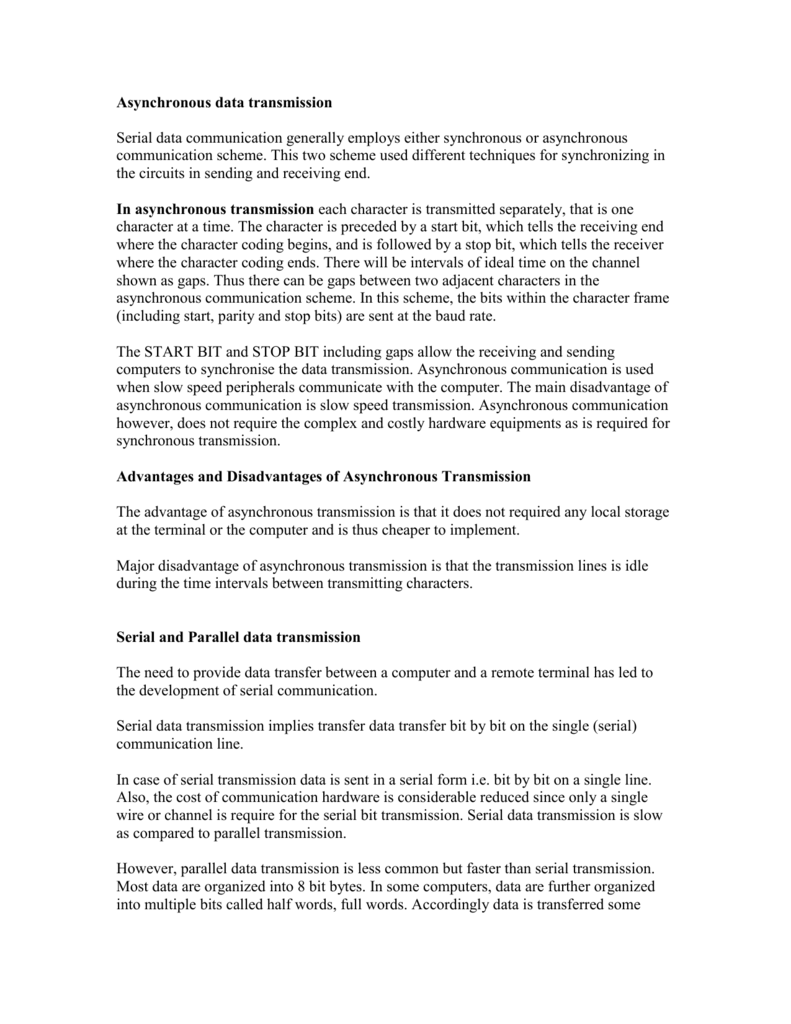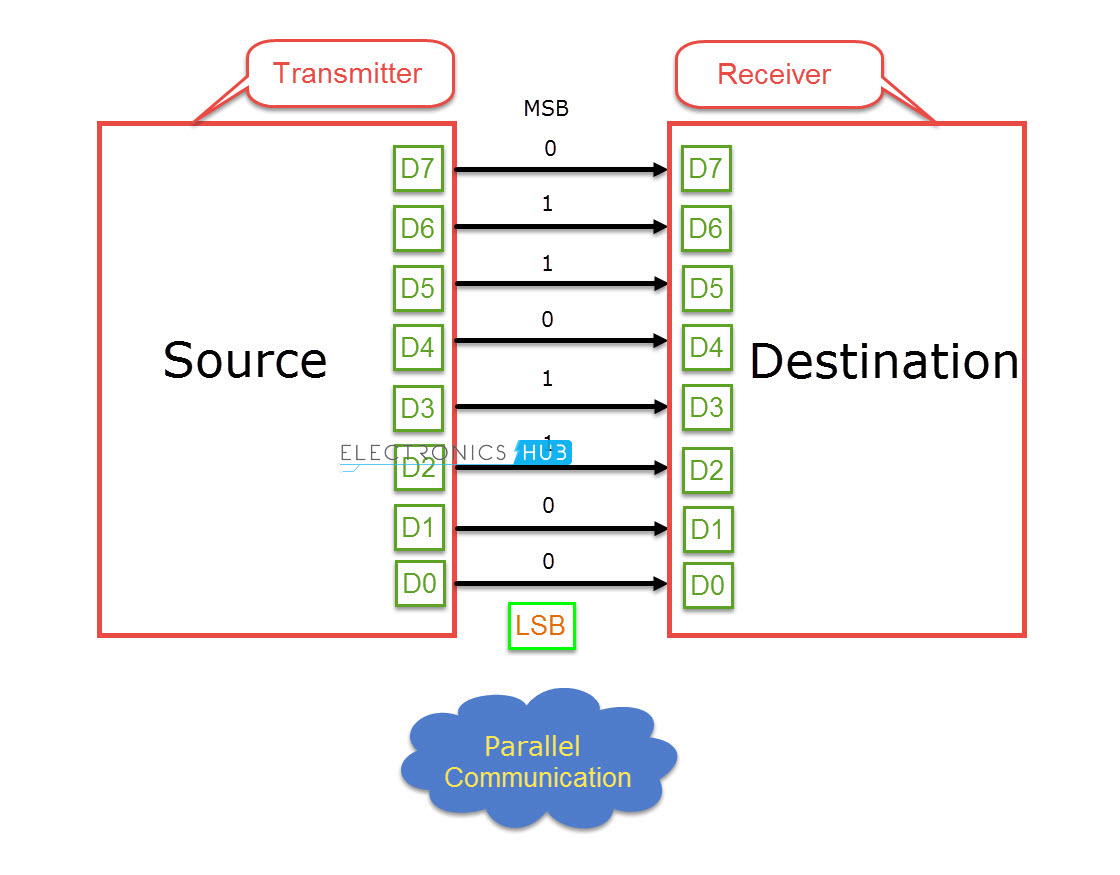

The disadvantages of parallel systems are the distance limitations and the cost in system resources. Examples are connecting a multiple toggle switch to each of the lines of a PIC input port, or each of the pins of a seven-segment LED to the various pins of a PIC output port. The hardware implementation is straightforward and does not require many additional components.
#ADVANTAGES AND DISADVANTAGES OF SERIAL AND PARALLEL DATA TRANSMISSION SOFTWARE#
In the first place, parallel transmission is fast and the software is simple to develop. PIC circuits that use parallel data transfers offer many advantages. For example, wiring an 8-line toggle switch to the eight pins of the 16F85 Port-B line provides parallel communications between the switch and the PIC.

In PIC-based systems, parallel communications often refer to the general principle rather than to the specific Centronics implementation. Figure 14-6 shows the pin diagram of the SN75176. This allows devices that traditionally communicate over RS-232-C serial connections to communicate over a two-wire EIA-485 network. The chip actually converts 485 signals to RS-232-C TTL-level signals. This is accomplished by means of a dedicated IC, such as the Texas Instruments Differential Bus Transceiver chip named the SN75176. Implementing the EIA-485 network requires some way of converting the 485 signal levels to the TTL-levels in the PIC circuit. The system is referred to as an EIA-485 network. Once the A/B data line is established, up to 32 devices can be connected to it. These are usually labeled the A and B lines. Only two wires are needed to carry the EIA-485 signals. In PIC-based systems, EIA-485 is often used to provide strong serial signals that can travel up to 4000 ft at high baud rates in noisy electrical environments. The standard also finds use in large sound systems, such as those found in theaters and music events.

Digital Logic, Arithmetic, and Conversions.


 0 kommentar(er)
0 kommentar(er)
